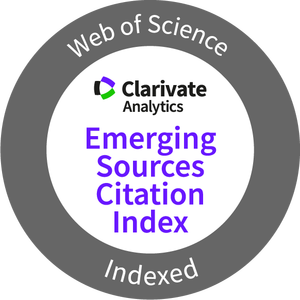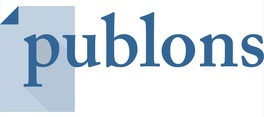Correlation between swimming pool water quality and physical fitness of swimmers aged 13–15 years
Abstract
This study examined the relationship between swimming pool water quality and swimmers' physical fitness, emphasizing the importance of maintaining good water quality for optimal health and performance. The research was conducted at the Universitas Negeri Padang (UNP) indoor swimming pool, involving 30 male junior high school swimmers aged 13-15, with varying swimming abilities. Water samples were collected from a depth of 20 cm at one point near the pool's edge during two observation periods (morning and afternoon). Bacterial colonies were counted using Nutrient Agar medium to assess water contamination. Physical fitness was measured using the Tes Kebugaran Jasmani Pelajar Nusantara (TKPN) instrument, which included tests for flexibility, strength, and endurance. In Observation I, the pool water met health standards with no bacterial contamination. However, in Observation II, bacterial contamination was detected in the afternoon, with a count of 5,103 CFU/mL, exceeding the standard threshold. Physical fitness tests revealed that most swimmers were in the "C" (Satisfactory) category, with a smaller percentage in the "A" (Excellent) and "B" (Good) categories. Correlation analysis found a significant negative relationship between pool water quality and fitness test results (p < 0.05). This study underscores the need for regular monitoring of swimming pool water quality to ensure swimmer health and performance, and calls for further research with larger, more diverse samples to deepen understanding of this relationship.
Downloads
-
Abstract346
-
PDF249
References
Apriyano, B., Zainuddin, Z. A., Hasnimy, A., Hashim, M., Sayyd, S. M., Mazlan, N., Wenando, F. A., Ockta, Y., & Anisa, M. F. (2025). Endurance of leg muscle strength and endurance of arm muscle strength to the ability of swimming speed 200 meters breaststroke. Retos, 2041, 327–334.
Elsworth, C., Dawes, H., Sackley, C., Soundy, A., Howells, K., Wade, D., Hilton-Jones, D., Freebody, J., & Izadi, H. (2009). A study of perceived facilitators to physical activity in neurological conditions. International Journal of Therapy and Rehabilitation, 16(1), 17–23. https://doi.org/10.12968/ijtr.2009.16.1.37936
Gajda, R., Kowalik, E., Rybka, S., Rêbowska, E., Smigielski, W., Nowak, M., Kwasniewska, M., Hoffman, P., & Drygas, W. (2019). Evaluation of the heart function of swimmers subjected to exhaustive repetitive endurance efforts during a 500-km relay. Frontiers in Physiology, 10, 1–9. https://doi.org/10.3389/fphys.2019.00296
Gallè, F., Dallolio, L., Marotta, M., Raggi, A., Di Onofrio, V., Liguori, G., Toni, F., & Leoni, E. (2016). Health-related behaviors in swimming pool users: Influence of knowledge of regulations and awareness of health risks. International Journal of Environmental Research and Public Health, 13(5), 1-12. https://doi.org/10.3390/ijerph13050513
Gallotta, M. C., Franciosi, E., Giorgi, M., Guidetti, L., Cerbara, E., Pes, G., Silvestri, F., & Curzi, D. (2024). Benefits of inclusive sport training on fitness and health of athletes with and without intellectual disability. Scientific Reports, 14(1), 1–11. https://doi.org/10.1038/s41598-024-69334-2
Hanashiro, A., Morita, M., Matté, G. R., Matté, M. H., & Torres, E. A. F. S. (2005). Microbiological quality of selected street foods from a restricted area of São Paulo City, Brazil. Food Control, 16(5), 439–444. https://doi.org/10.1016/j.foodcont.2004.05.004
Hsu, C., Krabak, B., Cunningham, B., & Borg-Stein, J. (2024). Swimming Anatomy and Lower Back Injuries in Competitive Swimmers: A Narrative Review. Sports Health, 16(1), 1-11. https://doi.org/10.1177/19417381231225213
Landrigan, P. J., Stegeman, J. J., Fleming, L. E., Allemand, D., Anderson, D. M., Backer, L. C., Brucker-Davis, F., Chevalier, N., Corra, L., Czerucka, D., Bottein, M. Y. D., Demeneix, B., Depledge, M., Deheyn, D. D., Dorman, C. J., Fénichel, P., Fisher, S., Gaill, F., Galgani, F., … Rampal, P. (2020). Human health and ocean pollution. Annals of Global Health, 86(1), 1–64. https://doi.org/10.5334/aogh.2831
Lauruschkus, K., Nordmark, E., & Hallström, I. (2015). “It’s fun, but...” Children with cerebral palsy and their experiences of participation in physical activities. Disability and Rehabilitation, 37(4), 283–289. https://doi.org/10.3109/09638288.2014.915348
Libero, T. Di, Falese, L., D’Ermo, A., Tosti, B., Corrado, S., Iannaccone, A., Diotaiuti, P., & Rodio, A. (2024). Physiological Profile Assessment and Self-Measurement of Healthy Students through Remote Protocol during COVID-19 Lockdown. Journal of Functional Morphology and Kinesiology, 9(3), 1-11. https://doi.org/10.3390/jfmk9030170
McKenzie, A., Larequi, S. A., Hams, A., Headrick, J., Whiteley, R., & Duhig, S. (2023). Shoulder pain and injury risk factors in competitive swimmers: A systematic review. Scandinavian Journal of Medicine and Science in Sports, 33(12), 2396–2412. https://doi.org/10.1111/sms.14454
Munajad, S. K. (2024). The Effect of Swimming Pool Water Quality on Health Complaints of Child Athletes Using the Swimming Pool (FIKK UNY). International Journal of Multidisciplinary Research and Analysis, 7(4), 1493–1501. https://doi.org/10.47191/ijmra/v7-i04-09
Natnael, T., Hassen, S., Desye, B., & Woretaw, L. (2023). Physicochemical and bacteriological quality of swimming pools water in Kombolcha Town, Northeastern Ethiopia. Frontiers in Public Health, 11, 1–8. https://doi.org/10.3389/fpubh.2023.1260034
The works and papers that are published in this Journal are subject to the following terms:
1. The Publication Service of the University of Murcia (the publisher) has the Publication Rights (Copyright) to the published papers and works, and favors and permits the reusing of the same under the license indicated in point 2.
© Servicio de Publicaciones, Universidad de Murcia, 2013
2. The papers and works are to be published in the digital edition of the Journal under the license Creative Commons Reconocimiento-No Comercial-Sin Obra Derivada 3.0 España (legal text). The copying, using, spreading, transmitting and publicly displaying of the papers, works or publication are permitted as long as: i) the authors and original sources (Journal, publisher and URL of the publication) are quoted; ii) it is not used for commercial benefit; iii) the existence and specifications of this users license are mentioned.
3. Conditions of Self-Archiving. It is permitted and encouraged that the authors spread electronically the pre-print (before printing) and/or post-print (the revised, evaluated and accepted) versions of their papers or works before their publication since this favors their circulation and early diffusion and therefore can help increase their citation and quotation, and also there reach through the academic community.
The works and papers that are published in this Journal are subject to the following terms:
1. The Publication Service of the University of Murcia (the publisher) has the Publication Rights (Copyright) to the published papers and works, and favors and permits the reusing of the same under the license indicated in point 2.
© Servicio de Publicaciones, Universidad de Murcia, 2013
2. The papers and works are to be published in the digital edition of the Journal under the license Creative Commons Reconocimiento-No Comercial-Sin Obra Derivada 3.0 España (legal text). The copying, using, spreading, transmitting and publicly displaying of the papers, works or publication are permitted as long as: i) the authors and original sources (Journal, publisher and URL of the publication) are quoted; ii) it is not used for commercial benefit; iii) the existence and specifications of this users license are mentioned.
3. Conditions of Self-Archiving. It is permitted and encouraged that the authors spread electronically the pre-print (before printing) and/or post-print (the revised, evaluated and accepted) versions of their papers or works before their publication since this favors their circulation and early diffusion and therefore can help increase their citation and quotation, and also there reach through the academic community.

















